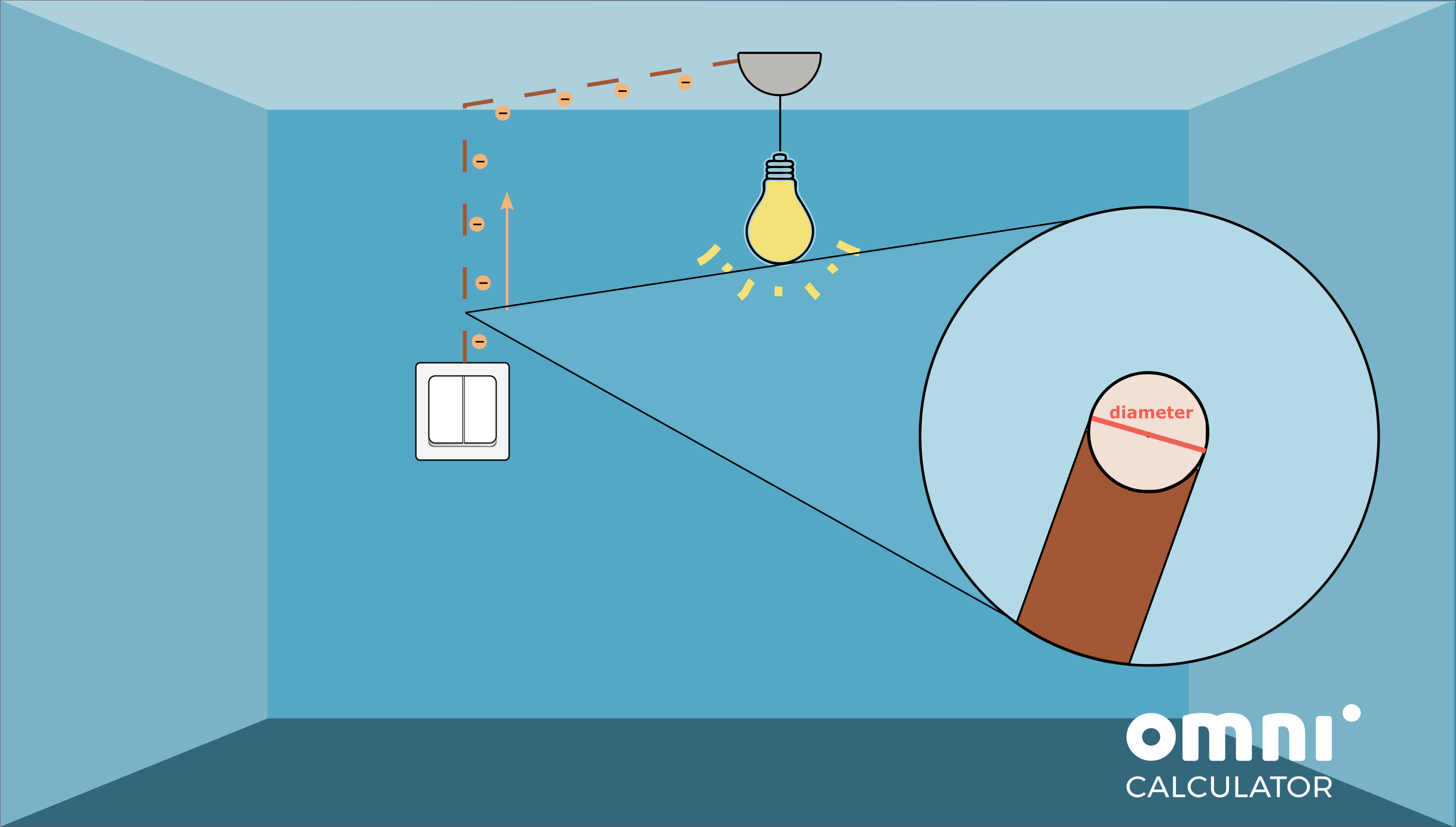Concepts addressed: velocity in an electric field, electrical power, and analytical skills.
Grade level: 11th
Scenario:

When a light switch is off, the electric circuit inside the wall of your house is interrupted, so neither an electric field nor electrons can flow through it. The moment you flip the switch on you close the circuit, meaning that electrons (and the electric field) are free to flow through the circuit again, and reach whatever device you wanted to power.
Assuming the wiring in your house is full copper 12AWG, and that the length of the cable connecting the switch to the overhead light bulb (60W LED) is 3m.
- How long would it take an electron in the switch to reach the light bulb?
- Is the result surprising? Why?
- Can you explain it? How long would it take light to travel the same distance?
Data:
Diameter of 12 AWG wire: 2.053mm
Voltage of household’s electric system: 220V (EU) || 120V (US)
Density of Carriers in copper: 8.5 1028 carriers/m³
Speed of light: 299 792 458 m/s
Useful calculators:
- Circumference calculator – https://www.omnicalculator.com/math/circumference
- Wire Resistance calculator – https://www.omnicalculator.com/physics/wire-resistance
- Ohm’s Law calculator – https://www.omnicalculator.com/physics/ohms-law
- Drift Velocity calculator – https://www.omnicalculator.com/physics/drift-velocity
- Velocity calculator – https://www.omnicalculator.com/physics/velocity
Question 1 hints:
Solve for time.
Question 2 hints:
Question 3 hints:
Solutions :
Because the light turns on immediately
Step-by-Step solutions :
The value of n is given, and A can be calculated using A = π r2, or by using the Circumference calculator. We find that A = 13.24mm2.
To calculate I, we can use the power draw formula: P = IV. For a standard American household, V = 120V, and our bulb is 60W, so we get I = 0.5A.
Plugging this data into the Drift Velocity calculator gives a speed of 0.000002773m/s.
All we need to do is use that speed and the length of the cable (distance travelled) to calculate time using V = d/t. You can do it by hand or with a calculator, and you will see that it takes the electrons 75.1 hours to travel along 3m of cable.
Because it takes hours for an electron to travel the length of the cable, yet the light turns on almost instantly.